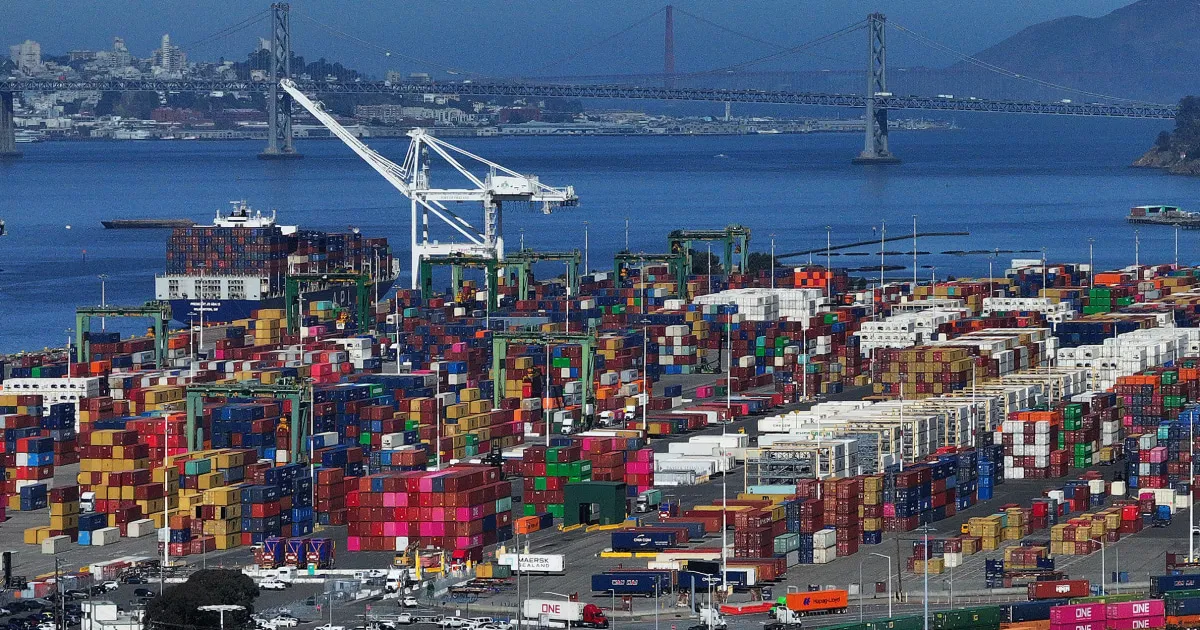
President Donald Trump’s ambitious plan to broker numerous trade deals with some of the United States' closest trading partners is beginning to show cracks. As the 90-day pause on most country-specific tariffs approaches its conclusion, the situation is becoming increasingly complex. Self-inflicted tensions, such as recent threats of tariffs against the European Union and increased duties on steel imports, have compounded the issues. Additionally, a new wave of court rulings challenging the president’s authority to impose tariffs is casting doubt over his entire initiative to reshape U.S. trade relations.
On Friday, President Trump announced a plan to double steel and aluminum tariffs to 50%. This decision came on the heels of fresh accusations against China, claiming it had violated the handshake agreement reached during talks in Geneva earlier this month. In response to the newly announced tariffs, the E.U. warned that it was preparing to implement countermeasures against U.S. goods. Similarly, China accused the U.S. of undermining the Geneva agreement by imposing new restrictions on the export of computer chips.
The escalating public disagreements over trade were anticipated despite the optimistic rhetoric emanating from White House officials. Former trade negotiators note that trade agreements typically require months, if not years, of negotiation. Many existing trade barriers are in place to protect local industries or in response to previous barriers established by the U.S. Warren Maruyama, a former general counsel for the Office of the U.S. Trade Representative during the George W. Bush administration, stated, “It’s going to be a long, drawn-out negotiation.”
Maruyama emphasized that most foreign trade negotiators are skilled and that negotiations between two sophisticated countries can often be quite brutal. The heightened tensions introduced by Trump could complicate discussions, as foreign officials may feel uncertain about what the U.S. is offering or its ultimate goals in the negotiations. Alex Jacquez, who worked for the National Economic Council during the Biden administration, remarked, “It is challenging for our trading partners, who feel like they are negotiating with a gun to their heads.”
Despite the challenges, U.S. officials remain optimistic about reaching additional trade deals in the coming month. According to a draft letter reviewed by Reuters, the Trump administration is urging countries to submit their best trade proposals, including offers to purchase U.S. industrial and agricultural goods, to accelerate negotiations. An official from the trade representative’s office stated, “Productive negotiations with many key trading partners continue at a rapid pace.”
However, after 60 days, only one tentative agreement has been reached with the United Kingdom, and nothing has yet been formalized. Trump has even hinted at the possibility of simply notifying most countries of their tariff rates after the 90-day pause, citing a lack of resources to negotiate individually.
Last month, Trump announced a 90-day pause on the significant tariffs imposed on China since April, following a meeting with top U.S. and Chinese officials in Switzerland. However, tensions began to resurface shortly after this pause. Chinese officials accused the U.S. of undermining their trade truce by warning companies about the use of Chinese chips, including those from chipmaker Huawei Technologies. The Chinese government labeled the U.S. guidance as “discriminatory” and “market distorting.”
Trump took to social media last week, asserting that China had not upheld its commitments, stating, “Everybody was happy! That is the good news!!! The bad news is that China, perhaps not surprisingly to some, HAS TOTALLY VIOLATED ITS AGREEMENT WITH US.” U.S. Trade Representative Jamieson Greer added that China has been “slow rolling” the agreement made in Switzerland, particularly regarding non-tariff retaliatory measures.
The trade relationship between the U.S. and the E.U. has also been fraught with tension, marked by a tit-for-tat exchange of tariffs since Trump's second term began. After initiating talks on a trade agreement in April, Trump threatened to impose a 50% tariff on European goods if progress was not made. Although he temporarily retracted this threat, he later announced an increase in tariffs on steel and aluminum from Europe, which the E.U. stated undermines ongoing negotiations.
An E.U. spokesperson remarked that this decision “adds further uncertainty to the global economy and increases costs for consumers and businesses on both sides of the Atlantic.”
Trade discussions between the U.S. and Japan have also encountered obstacles. The two countries have engaged in multiple rounds of negotiations without reaching a formal agreement. Japan’s economy minister, Ryosei Akazawa, noted that any agreement would be difficult to achieve unless the U.S. is willing to remove tariffs, including the controversial 10% tariff on all products and 25% tariffs on automobiles, steel, and aluminum.
As negotiations continue, U.S. officials highlighted the importance of addressing tariffs and non-tariff measures to foster mutual economic security and investment. Both sides are set to reconvene before the upcoming Group of Seven summit, where Trump and Japanese Prime Minister Shigeru Ishiba will be present.
In summary, while President Trump's trade ambitions remain strong, the path to successful negotiations with key trading partners like China, the E.U., and Japan is fraught with challenges. The next month will be crucial in determining the future of U.S. trade relations.